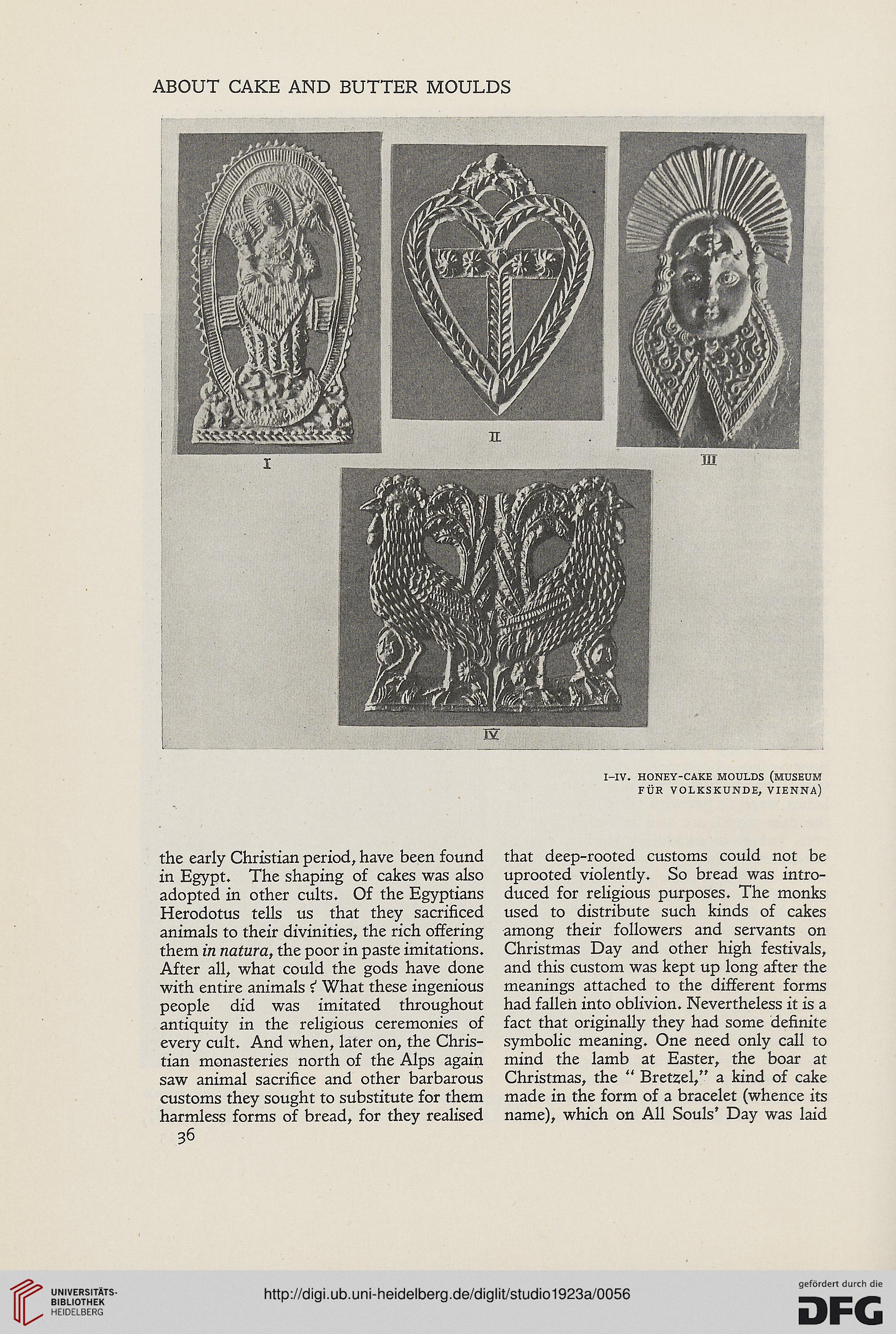ABOUT CAKE AND BUTTER MOULDS
I-IV. HONEY-CAKE MOULDS (MUSEUM
FUR VOLKSKUNDE, VIENNA)
the early Christian period, have been found
in Egypt. The shaping of cakes was also
adopted in other cults. Of the Egyptians
Herodotus tells us that they sacrificed
animals to their divinities, the rich offering
them in natura, the poor in paste imitations.
After all, what could the gods have done
with entire animals i What these ingenious
people did was imitated throughout
antiquity in the religious ceremonies of
every cult. And when, later on, the Chris-
tian monasteries north of the Alps again
saw animal sacrifice and other barbarous
customs they sought to substitute for them
harmless forms of bread, for they realised
36
that deep-rooted customs could not be
uprooted violently. So bread was intro-
duced for religious purposes. The monks
used to distribute such kinds of cakes
among their followers and servants on
Christmas Day and other high festivals,
and this custom was kept up long after the
meanings attached to the different forms
had fallen into oblivion. Nevertheless it is a
fact that originally they had some definite
symbolic meaning. One need only call to
mind the lamb at Easter, the boar at
Christmas, the “ Bretzel,” a kind of cake
made in the form of a bracelet (whence its
name), which on All Souls’ Day was laid
I-IV. HONEY-CAKE MOULDS (MUSEUM
FUR VOLKSKUNDE, VIENNA)
the early Christian period, have been found
in Egypt. The shaping of cakes was also
adopted in other cults. Of the Egyptians
Herodotus tells us that they sacrificed
animals to their divinities, the rich offering
them in natura, the poor in paste imitations.
After all, what could the gods have done
with entire animals i What these ingenious
people did was imitated throughout
antiquity in the religious ceremonies of
every cult. And when, later on, the Chris-
tian monasteries north of the Alps again
saw animal sacrifice and other barbarous
customs they sought to substitute for them
harmless forms of bread, for they realised
36
that deep-rooted customs could not be
uprooted violently. So bread was intro-
duced for religious purposes. The monks
used to distribute such kinds of cakes
among their followers and servants on
Christmas Day and other high festivals,
and this custom was kept up long after the
meanings attached to the different forms
had fallen into oblivion. Nevertheless it is a
fact that originally they had some definite
symbolic meaning. One need only call to
mind the lamb at Easter, the boar at
Christmas, the “ Bretzel,” a kind of cake
made in the form of a bracelet (whence its
name), which on All Souls’ Day was laid




